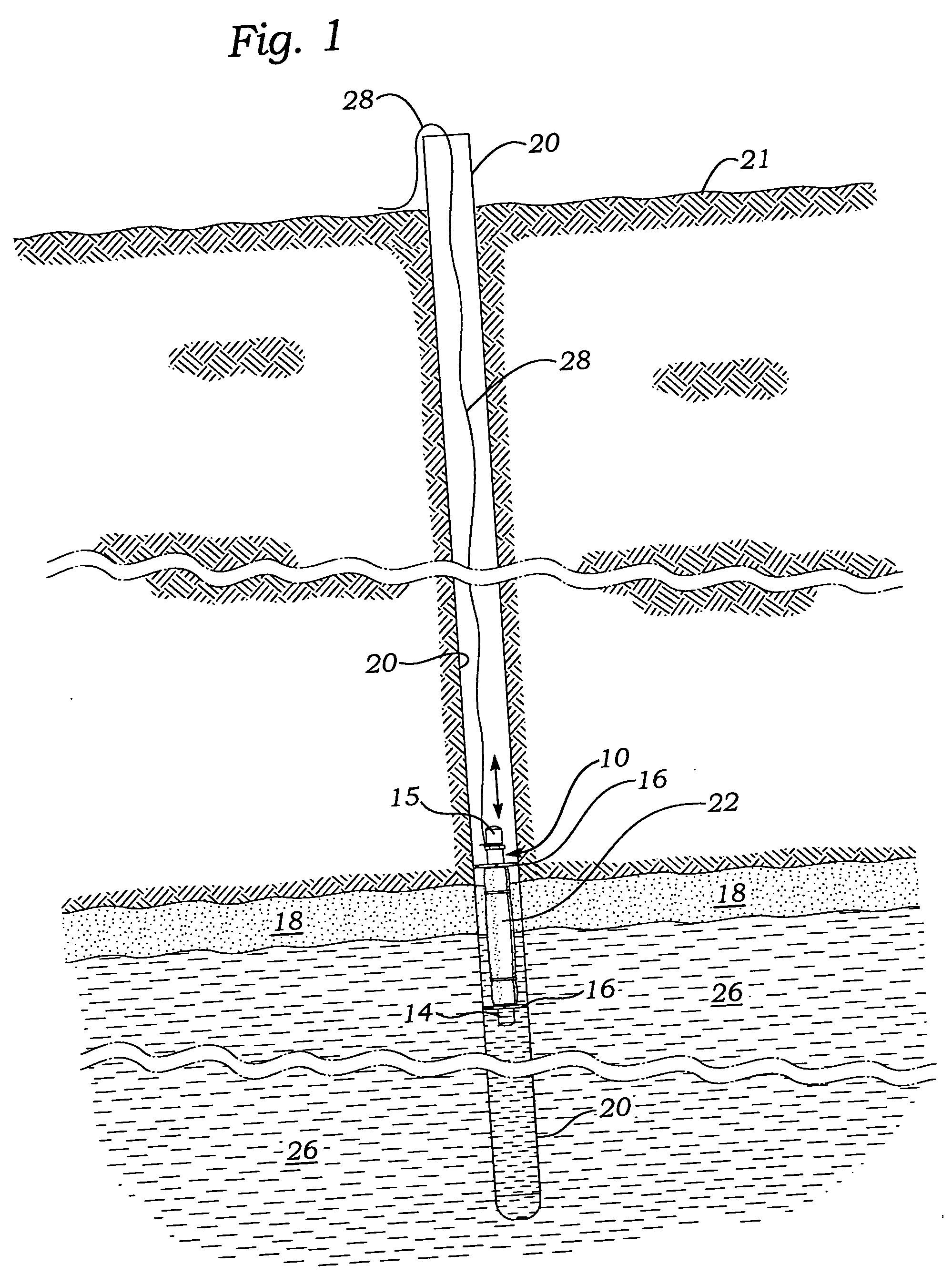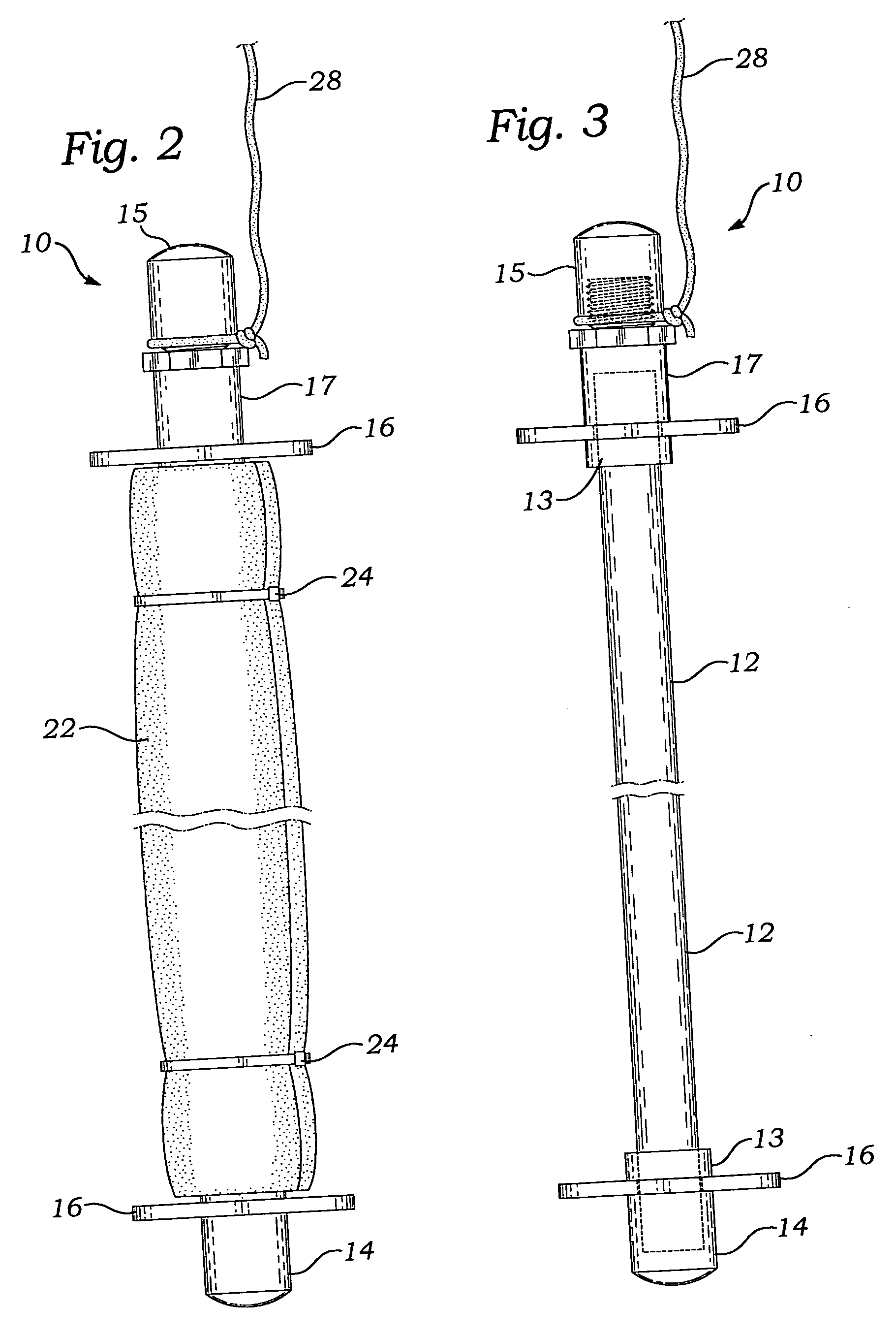Self-leveling in-situ device and method for passively removing oil from water wells
a technology of self-leveling and in-situ device, which is applied in the direction of separation process, chemistry apparatus and processes, and well accessories, etc., can solve the problems of a buffer device, and achieve the effect of easy fabrication and inexpensive way
- Summary
- Abstract
- Description
- Claims
- Application Information
AI Technical Summary
Benefits of technology
Problems solved by technology
Method used
Image
Examples
Embodiment Construction
[0010]FIGS. 1-3 in the drawings illustrate one embodiment of the non-inflatable buoyant oil removal device 10 of the invention and its use for removing non-aqueous liquids 18, such as hydrocarbons, from a monitoring well 20, which extends from the ground surface 21 into the groundwater 26. The monitoring well may be fairly shallow extending into the ground between 20 and 30 feet or much deeper, for example, up to as much as about 100 feet. The layer of non-aqueous liquid 18 floating on the surface of the water can vary in thickness from less than about 1 inch to as much as 25 feet. Typically, the thickness of the layer of non-aqueous liquids ranges from about 0.01 to about 6 feet.
[0011] As seen in FIGS. 2 and 3, the oil removal device 10 comprises a hollow tube 12, upper and lower retaining rings 13, coupler 17, upper end cap 15, lower end cap 14, centralizers 16 and hydrophobic sorptive pad 22, which is wrapped around tube 12 and secured thereto with plastic or metal ties 24. A ba...
PUM
| Property | Measurement | Unit |
|---|---|---|
| diameter | aaaaa | aaaaa |
| diameter | aaaaa | aaaaa |
| diameter | aaaaa | aaaaa |
Abstract
Description
Claims
Application Information
 Login to View More
Login to View More - R&D
- Intellectual Property
- Life Sciences
- Materials
- Tech Scout
- Unparalleled Data Quality
- Higher Quality Content
- 60% Fewer Hallucinations
Browse by: Latest US Patents, China's latest patents, Technical Efficacy Thesaurus, Application Domain, Technology Topic, Popular Technical Reports.
© 2025 PatSnap. All rights reserved.Legal|Privacy policy|Modern Slavery Act Transparency Statement|Sitemap|About US| Contact US: help@patsnap.com


